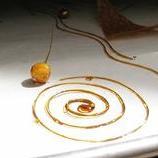I am very familiar with Easter pie variations -I won a pie competition in culinary school with one. The one time I saw an Italian person make it on tv, they also used pasta as the crust. Essentially, the traditional pie lets you use up the more high-end of the preserved meats, cheeses, olives, etc. you had been storing to use in the winter and then had set aside during Lent and other fast days. You are then prepared to start making and eating springtime foods. Generally, the filling is ricotta and raw eggs to which each family then would add hard boiled eggs, ham, salami, olives, other preserved vegetables (artichokes, red peppers), onions, and some spring greens -if the greens were available. The variability of the date of Easter, and the various climates within Italy's borders means that for families in the North, the 'traditional' pie might just be meats and preserved vegetables, whereas, for families in the middle and South, baby spinach or other baby greens are part of the 'traditional' dish.
I have seen it both with and without a layer of pasta in the middle. If this is going to be the only pasta dish at the meal, I personally feel like it should have pasta in the middle.
BTW, I think I also solved my own quandry. I remembered a pretty comprehensive modern Italian cooking site I visit occasionally and, they have a recipe for the Colonne di Pompei, la pasta di Gragnano: Colonne di Pompei al Tonno Fresco. My guess here is simply that the pasta, which is made in an area of Naples, recalls broken pillars of Pompeii which is within the modern city limits of Pompei (one i). Being near the coast, I imagine that seafood is an important regional food. (plus, it's a big fish served with a big pasta)




